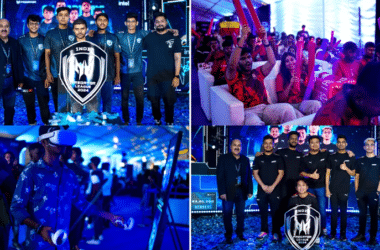Xiaomi’s Redmi Note 13 Series: What to Expect
Xiaomi, one of the leading smartphone manufacturers globally, is all set to introduce its Redmi Note 13 series in India on January 4th. This series, which includes the Note 13, Note 13 Pro, and Note 13 Pro+, has already made its debut in Xiaomi’s home country, offering a glimpse into the specifications of these upcoming devices. As the launch date approaches, let’s dive into what you can expect from the Redmi Note 13 series.
MIUI 14-Based Android 13 Pre-Installed
According to tipster Sudhanshu Ambhore, the Redmi Note 13 devices in India and global markets will come with MIUI 14-based Android 13 pre-installed. This means users can look forward to the latest Android operating system, complete with Xiaomi’s MIUI skin for a customized experience. Additionally, Xiaomi is reported to extend software support for these devices, promising three years of Android OS updates, potentially extending up to Android 16, along with four years of security patches. This is a significant improvement compared to the typical two-year support offered by Xiaomi’s sub-brand Note series.
No Xiaomi HyperOS
Interestingly, the Redmi Note 13 series is expected to forgo Xiaomi’s HyperOS. This detail, as mentioned by the tipster, adds an element of intrigue to the software experience on these devices, hinting at a more streamlined approach.
Hardware Specifications
Let’s take a closer look at the hardware specifications of the Redmi Note 13 series:
Display
- The Redmi Note 13 boasts a 6.67-inch AMOLED display with a 120Hz refresh rate.
- In contrast, the Note 13 Pro and Note 13 Pro+ feature a larger 6.67-inch 1.5K FHD+ AMOLED display, also with a 120Hz refresh rate.
Chipset
- The base model is equipped with a MediaTek Dimensity 6080 SoC.
- Meanwhile, the Pro variant gets a power boost with the Snapdragon 7s Gen 2 SoC.
- The Pro+ model is powered by the Dimensity 7200 Ultra SoC.
Camera Setup
- The Redmi Note 13 features a dual rear camera setup, consisting of a 100MP primary camera and a 2MP secondary camera.
- On the other hand, both the Pro and Pro+ models step up the photography game with a 200MP primary camera, an 8MP ultra-wide-angle lens, and a 2MP depth sensor.
- All models in the series sport a 16MP front camera for selfies and video calls.
Storage
- The Redmi Note 13 offers configurations with up to 12GB of RAM and 256GB of internal storage.
- Meanwhile, the Note 13 Pro and Note 13 Pro+ take it a notch higher with options of up to 16GB of RAM and 512GB of storage.
Software and Battery
- All Redmi Note 13 series phones run on Android 13-based MIUI 14 out of the box.
- Battery capacity varies with the Note 13 and Note 13 Pro+ featuring a 5,000mAh battery with 33W and 120W fast charging support, respectively.
- The Note 13 Pro packs a 5,100mAh battery with 67W fast charging support.
Pricing
When it comes to pricing, the Redmi Note 13 was launched at CNY 1,199 (approximately Rs 13,900), with the Pro model starting at CNY 1,499 (around Rs 17,400). As for the base model of the Redmi Note 13 Pro+, it begins at CNY 1,999 (approximately Rs 22,800). While these figures are conversion rates, it’s anticipated that the Redmi Note 13 series will maintain a similar pricing structure when it hits the Indian market.
However, a recent leak has suggested that the Redmi Note 13 Pro with 12GB of RAM and 256GB of storage could have a box price of Rs 32,999. It’s worth noting that the actual retail price may differ from the box price, as is often the case with smartphone launches. These smartphones will be available for purchase on Flipkart and Amazon.
In conclusion, Xiaomi’s Redmi Note 13 series promises an exciting lineup of smartphones with impressive hardware and software enhancements. With a focus on extended software support, high-quality cameras, and competitive pricing, these devices are sure to make waves in the Indian smartphone market.
| Key Specs | |
|---|---|
| RAM | 6 GB |
| Processor | MediaTek Dimensity 6080 MT6833 |
| Rear Camera | 100 MP + 2 MP |
| Front Camera | 16 MP |
| Battery | 5000 mAh |
| Display | 6.67 inches (16.94 cm) |
| General | |
| Launch Date | January 4, 2024 (Expected) |
| Operating System | Android v13 |
| Custom UI | MIUI |
| Performance | |
| Chipset | MediaTek Dimensity 6080 MT6833 |
| CPU | Octa-core (2.4 GHz, Dual core, Cortex A76 + 2 GHz, Hexa Core, Cortex A55) |
| Architecture | 64 bit |
| Fabrication | 6 nm |
| Graphics | Mali-G57 MC2 |
| RAM Type | LPDDR4X |
| Display | |
| Display Type | AMOLED |
| Screen Size | 6.67 inches (16.94 cm) |
| Resolution | 1080 x 2400 pixels |
| Aspect Ratio | 20:9 |
| Pixel Density | 395 ppi |
| Screen to Body Ratio | 89.02% |
| Screen Protection | Corning Gorilla Glass v5 |
| Bezel-less display | Yes with punch-hole display |
| Touch Screen | Yes, Capacitive Touchscreen, Multi-touch |
| Brightness | 1000 nits |
| Refresh Rate | 120 Hz |
| Design | |
| Height | 161.1 mm |
| Width | 74.9 mm |
| Thickness | 7.6 mm |
| Weight | 173.5 grams |
| Colors | Sand White, Midnight Black, Time Blue |
| Waterproof | Yes, Splash proof, IP54 |
| Ruggedness | Dust proof |
| Camera | |
| MAIN CAMERA | |
| Camera Setup | Dual |
| Resolution | 100 MP f/1.7, Wide Angle, Primary Camera (1.67″ sensor size, 0.64µm pixel size) |
| 2 MP f/2.4, Depth Camera | |
| Autofocus | Yes |
| Flash | Yes, LED Flash |
| Image Resolution | 11000 x 9100 Pixels |
| Settings | Exposure compensation, ISO control |
| Shooting Modes | Continuous Shooting |
| High Dynamic Range mode (HDR) | |
| Camera Features | Digital Zoom |
| Auto Flash | |
| Custom Watermark | |
| Face detection | |
| Touch to focus | |
| Video Recording | 1920×1080 @ 30 fps |
| 1280×720 @ 30 fps | |
| Video Recording Features | Short Video Mode |
| FRONT CAMERA | |
| Camera Setup | Single |
| Resolution | 16 MP, Primary Camera |
| Video Recording | 1920×1080 @ 30 fps |
| 1280×720 @ 30 fps | |
| Battery | |
| Capacity | 5000 mAh |
| Type | Li-Polymer |
| Removable | No |
| Quick Charging | Yes, Fast, 33W |
| USB Type-C | Yes |
| Storage | |
| Internal Memory | 128 GB |
| Expandable Memory | No |
| Storage Type | UFS 2.2 |
| Network & Connectivity | |
| SIM Slot(s) | Dual SIM, GSM+GSM |
| SIM Size | SIM1: Nano, SIM2: Nano |
| Network Support | 5G Supported in India, 4G Supported in India, 3G, 2G |
| VoLTE | Yes |
| SIM 1 | 5G Bands: FDD N1 / N5 / N8 / N28 |
| TDD N41 / N784G Bands: TD-LTE 2600(band 38) / 2300(band 40) / 2500(band 41) / 2100(band 34) / 1900(band 39) | |
| FD-LTE 2100(band 1) / 1800(band 3) / 900(band 8) / 850(band 5)3G Bands: UMTS 2100 / 850 / 900 MHz2G Bands: GSM 1800 / 1900 / 850 / 900 MHz | |
| GPRS: AvailableEDGE: Available | |
| SIM 2 | 5G Bands: FDD N1 / N5 / N8 / N28 |
| TDD N41 / N784G Bands: TD-LTE 2600(band 38) / 2300(band 40) / 2500(band 41) / 2100(band 34) / 1900(band 39) | |
| FD-LTE 2100(band 1) / 1800(band 3) / 900(band 8) / 850(band 5)3G Bands: UMTS 1900 / 850 / 900 MHz2G Bands: GSM 1800 / 1900 / 850 / 900 MHz | |
| GPRS: AvailableEDGE: Available | |
| Wi-Fi | Yes, Wi-Fi 5 (802.11 b/g/n/ac) 5GHz |
| Wi-Fi Features | Mobile Hotspot |
| Bluetooth | Yes, v5.3 |
| GPS | Yes with A-GPS, Glonass |
| NFC | No |
| USB Connectivity | Mass storage device, USB charging |
| Multimedia | |
| Loudspeaker | Yes |
| Audio Jack | 3.5 mm |
| Sensors | |
| Fingerprint Sensor | Yes |
| Fingerprint Sensor Position | Side |
| Other Sensors | Light sensor, Proximity sensor, Accelerometer, Compass, Gyroscope |
FAQs
- When will the Redmi Note 13 series be launched in India?
- Xiaomi is set to launch the Redmi Note 13 series in India on January 4th.
- What are the key highlights of the Redmi Note 13 series?
- The Redmi Note 13 series features MIUI 14-based Android 13, extended software support, high-resolution cameras, and competitive pricing.
- How much RAM and storage options are available for these smartphones?
- The Redmi Note 13 series offers configurations with up to 16GB of RAM and 512GB of internal storage.
- What is the pricing range for the Redmi Note 13 series?
- While the exact pricing in India is yet to be confirmed, it’s expected to be in line with the Chinese launch, with prices ranging from approximately Rs 13,900 to Rs 22,800.
- Where can I purchase the Redmi Note 13 series in India?
- These smartphones will be available for purchase on Flipkart and Amazon, among other retail channels.












